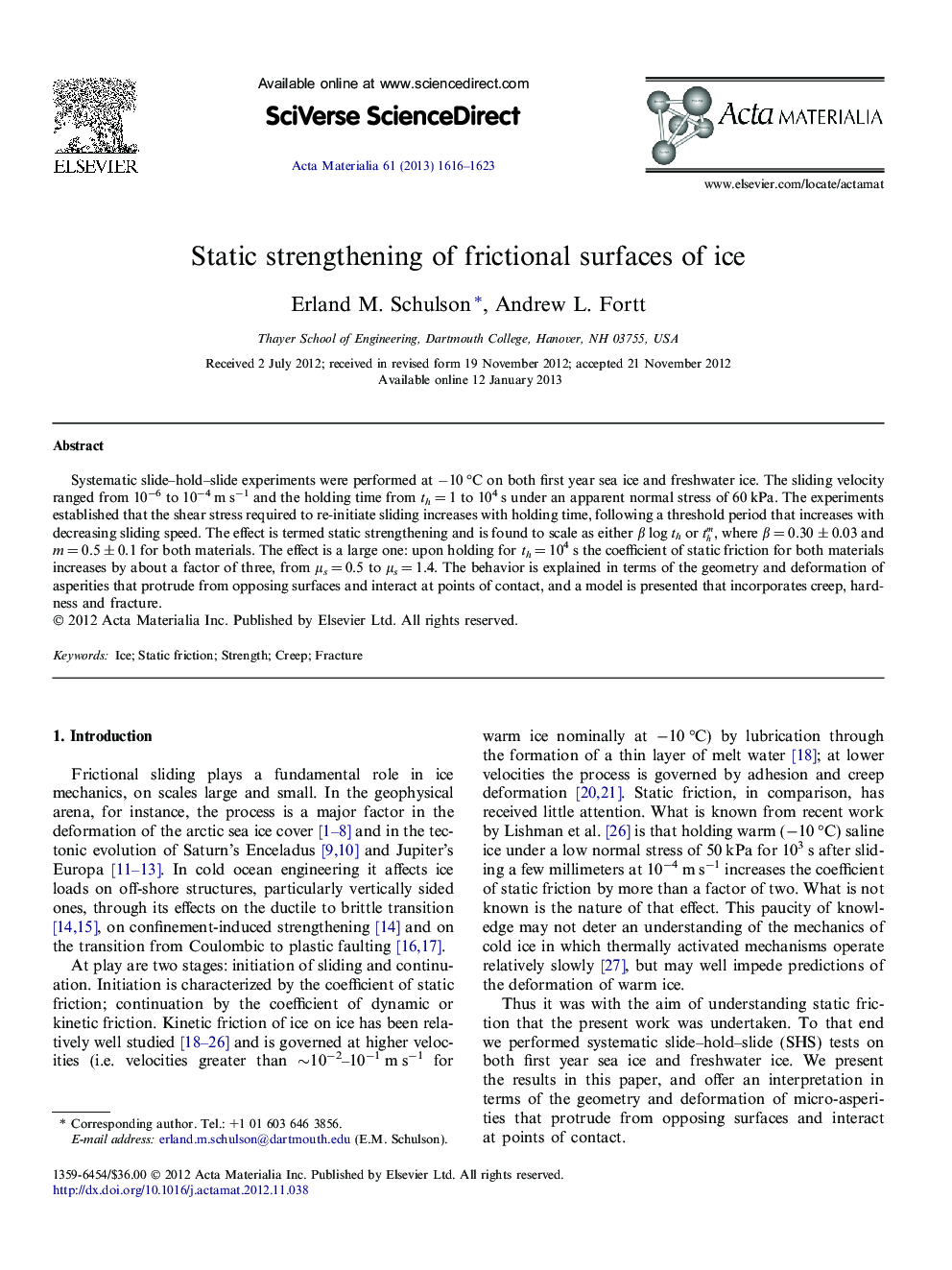| Article ID | Journal | Published Year | Pages | File Type |
|---|---|---|---|---|
| 1446005 | Acta Materialia | 2013 | 8 Pages |
Systematic slide–hold–slide experiments were performed at −10 °C on both first year sea ice and freshwater ice. The sliding velocity ranged from 10−6 to 10−4 m s−1 and the holding time from th = 1 to 104 s under an apparent normal stress of 60 kPa. The experiments established that the shear stress required to re-initiate sliding increases with holding time, following a threshold period that increases with decreasing sliding speed. The effect is termed static strengthening and is found to scale as either β log th or thm, where β = 0.30 ± 0.03 and m = 0.5 ± 0.1 for both materials. The effect is a large one: upon holding for th = 104 s the coefficient of static friction for both materials increases by about a factor of three, from μs = 0.5 to μs = 1.4. The behavior is explained in terms of the geometry and deformation of asperities that protrude from opposing surfaces and interact at points of contact, and a model is presented that incorporates creep, hardness and fracture.
